Inside the neighbourhoods of Lisboa
Lisboa is a city built on 7 hills. This means that has a lot of charming neighbourhoods, all with his own passion, atmoshere and history. Let's dive into them all, so we learn the inside of the neighbourhoods of Lisboa.
Overview of the neighbourhoods of Lisboa
Click or tap on the name of the neighbourhood to get more inside information.
Inside the historical center
keywords:
Lisboa, Lisbon, neighbourhoods, 7 hills, atmosphere, passion

What are the famous neighbourhoods inside the historical center of Lisboa?
Inside the historical center of Lisboa are a lot of neighbourhoods to discover. All of them heave there specific atmosphere. The most of them are on or around one of the 7 hills of the city. Yes, Lisboa is built on 7 hills near the wide Tagus river. Get already an impression over here.
Alfama
"The oldest neighbourhood of Lisboa"
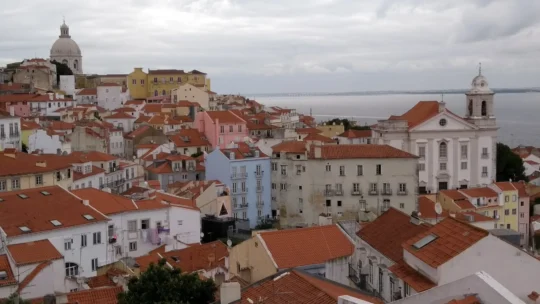

"Typical atmosphere"
The first stop is in the oldest part of the city. This is called Alfama. The name come from the Moorish people. This neighbourhood still has the typical Portuguese atmosphere. In Alfama, you find the typical Portuguese streets and discover how the city was built up before the earthquake of 1755.
"Fado in the evening"

A lot of good Fado restaurants can be found here, while the cradle of the Fado is more in Mouraria. Every evening you can enjoy Fado in Alfama and Mouraria. This music genre still is the most famous music of Portugal. It became more popular by Amália Rodrigues.

"The cradle of Lisboa"

At the top of Alfama is the São Jorge castle situated. From this part of the city, Lisboa was built up. In history, a lot of cultures already settled in the region of the castle. Also, the first city walls are still available in Alfama.
"Walk and take Tram 28E"


To get the most from the Alfama, walk to the small streets and discover what you find after every corner. Over there, you feel that the time stood still and everyone still has the time for each other. The old typical city tram 28E also goes through this warm neighbourhood and is nice to do.
BAIXA POMBALINA
"The lower neighbourhood near the Tagus river"



"In the middle of the higher neighbourhoods"
Baixa Pombalina, also called Baixa, is the lower part of the historical center near the Tagus river. It contains the most important squares and all the main traffic passes through this neighbourhood. In front of you, you have the wide Tagus river, o rio Tejo. In that case, Alfama is situated at your right side. At the left you have Cais de Sodré, Chiado, Bairro Alto and Príncipe Real. Baixa is ideal to bring you from one neighbourhood to another. But for doing this, you always have to climb. Of course, you can also take the popular public transport. The typical old trams or a bus are the most ideal. In that way, you still see something from the city around you. Or take an elevator.
Also wonderful squares and monuments can be discovered here. So, take your time when you pass through Baixa Pombalina. Read further the next paragraph for some interesting squares to discover.
"Baixa is never empty"


Near the Tagus river, you find the large Praça do Comércio. Many people call this "the square which is never empty". But this also is the same for the other large streets and squares in Baixa. The large Rua Augusta connects Praça Comércio with the other parts in this neighbourhood. Some other important squares over here are Praça da Figueira, Martim Moniz, Rossio and Rstauradores. From here, it is connected through the Avenida da Liberdade to Marquês de Pombal and the Eduardo VII park.



"Historical elevators"
A lot of elevators connect Baixa with the higher neighbourhoods of Lisboa. The 2 most famous are Santa Justa and Glória. These bring you respectively to Largo de Carmo and Príncipe Real.
BAIRRO ALTO - CHIADO
"Evening leisure with culture and poetry"



"Food, literature and poetry"
These are 2 neighbourhoods, but they are many times called together. It is because they both are the home of literature, culture and poetry in Lisboa. In the evening you find here a lot of good restaurants to go out for diner. Some are more typical Portuguese, some are more for the tourists.
"Fernando Pessoa and Chiado"
Lisboa's most famous poet, Fernando Pessoa, loved this part of the city. He was born near the Opera House, o Teatro Nacional de São Carlos. He has 2 statues in Chiado. One is at the Opera House. The other statue is at Café Brasileira. Because, this was his favorite place to spend his time.
"Full of live in the evening"

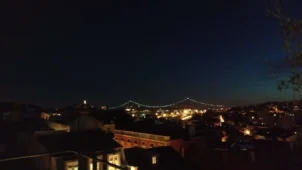
A few important squares in this neighbourhood are Praça Luís de Camões, Largo do Carmo, São Roque and Trindade. Also, visit the small restaurant streets in the evening. At this moment, they are full of live and a nice go for dinner. With the Bica elevator you can go down further on the next neighbourhood: Cais de Sodré.

CAIS DE SODRÉ
"Time to go out"



Wanna enjoy the evening and night? Than this is the neighbourhood for you. Rua cor de rosa is the place to be, if you want to go out. But, of course, Cais de Sodré also has a lot to do and see during the day.
"Go to the Time Out Market"



One of the most impressive buildings over here, is the Time Out Market (Ribeira Market). At this moment it is a food market. It has a market hall with fresh food and part where you can enjoy great food of the best chef's in town. In previous times it was the place where the fresh fish was traded.
"Visit Cristo Rei"
It is possible to take a ferry in Cais de Sodré to reach the other side of the Tagus river. From there you can take a bus to go to the great statue of Cristo Rei. Portugal received this statue after a plea in Fátima to keep Portugal out of World War II. Portugal indeed was "neutral" during World War II.

MARQUÊS DE POMBAL
"A tribute to the history"


By traveling from Restauradores in Baixa over the Avenida da Liberdade, you reach the statue of Marquês de Pombal. He was the main figure in the rebuilt of Lisboa after the earthquake of 1 November 1755. Around his statue is one of the most important roundabouds in the city. Here passes all the main traffic.

"Gardens as a tribute"


At the other side of the statue is the large Eduardo VII park situated. A nice piece of nature in the historical city. Finally, we reach the Jardim Amália Rodrigues. It is a garden as tribute to the great Fadista who made Fado popular.
PRÍNCIPE REAL
"Art and creativity find his way"
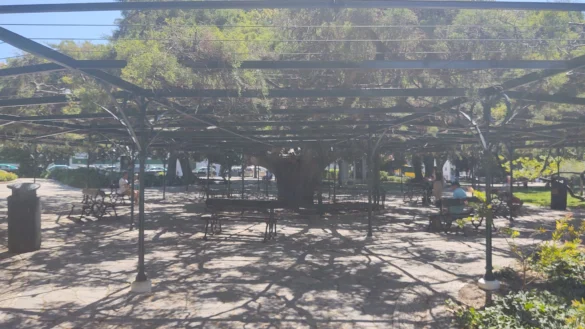
Finally, we arrived in our latest neighbourhood of the historical center of Lisboa. Príncipe Real starts from the Miradouro São Pedro de Alcântara to the Botanical Garden of Lisboa and at the other side to Estrela.


"A lot of places to be creative"
Inside this neighbourhood are a lot of beautiful city gardens. On the main square, there is the Príncipe Real garden. But also the Botanical Garden of Lisboa and the Estrela garden are part of this neighbourhood. This makes it a nice place to relax and be creative in what you do. For this reason a lot of creative people are attracted to Príncipe Real. The Embaixada near the central square is a nice example of this. A lot of small creative businesses are located here.



"Many ways to go inside this neighbourhood"
Come with the Glória elevator from Restauradores in Baixa to the Miradouro São Pedro de Alcântara or by walking from Bairro Alto. Than you have to pass the church of São Roque. At the other side, you have Rato and further Amoreiras. from this side you can go back to our previous neighbourhood, Marquês de Pombal.


"The house of Amália Rodrigues"

The house where Fadista Amália Rodrigues lived, is also situated in this neighbourhood. Now it is open as a museum. The nice aspect about this house is that everything remained the same as Amália left it. The visit is a guided tour. But, I promise you it is a nice to do if you are in this region. It feels like Amália is still there and she can every time come in to welcome you.
Digital Travel Guide
All these information bundled together in a digital travel guide. No internet connection needed and have all your inside information in your pocket. Where you are, where you go. Voyageiro.eu delivers a nice PDF to download on your personal device. Ready to travel with passion through Lisbon. The brochure is available in the Etsy shop of Voyageiro.
Are there interesting neighbourhoods outside the historical center of Lisboa?
Also outside of the historical center of Lisboa is a lot to see. What did you think of Belém, maybe the largest sub part of Lisboa. It has the large Jerónimos Monastry, the famous Pasteis de Belém and some other interesting spots to see. Between the old city and Belém, the old industrial part is transformed into a great place of creativity.
ALCÂNTARA
"Refurbished old industry"
Between the historical part of Lisboa and Belém is an old site of industry located. This is the region of Alcântara. You find it around the 25 April bridge, which connects Lisboa with Almada at the other side of the Tagus river.
"The creative hub LX Factory"
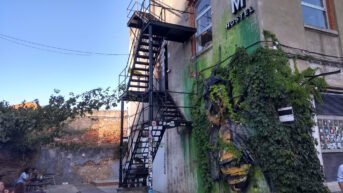


Since 2008, a group of young creative entrepreneurs transformed a site with more than 20 000m² of industrial buildings into a hip place to be for everyone. On your Lisboa trip, you don't may miss this site. Now, there are many restaurants, bars, shops, a hostel and so on. When you go to or come from Belém, take a stop over there. you will like it. It is easy to reach this location with a lot of buses and tram 15E.
"Take a drink in an old bus"
On the river side, at the other side of the LX Factory, there you enter Village Underground. A nice location to take a drink in a nice concept. It are a lot of creative constructions of buses where you can sit down and enjoy the moment. By talking about buses, don't miss the Carris Museum. Carris is the company is Lisboa of the public transport.

"For those who don't have fear of heights"
For those who like it and have no fear of heights, they have to go to Pilar 7. Here you get a look inside the 25 April bridge. Finally you get a nice viewpoint at the top of the bridge. But as told, you don't may have fear of heights!
"Hippo hippo!"

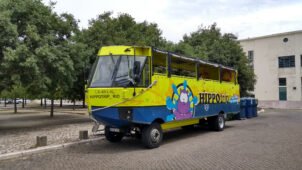
Otherwise, what do you think of a guided city tour with an amphibious vehicle? Well, than you have to go to the marina. There you find the Hippotrip! With this vehicle you see Lisboa through the streets and from the Tejo river. A nice to do, especially with children. Sometimes it also is possible to book it in Belém.
BELÉM
"The origin of the Pastéis de Belém"


"A large sub municipality out of the historical city center"
A little bit away from the historical city center, near the Tejo river, we arrive in the largest sub municipality of Lisboa. Now, we reached Belém. The most easy way to travel to Belém is with the tram 15E. But you also can take the bus from the historical city center or a train in Cais de Sodré. When you travel for the first time to Lisboa, you can't leave without you have been in Belém. Read further below to find out why.
"Belém has a lot of things to see"




First of all, in Belém we discover the famous Belém Tower and the Padrão dos Descobrimentos. In front of these monuments, you find a large monastry, The Mosteiro dos Jerónimos. Here are the famous custard tarts of Belém born: the Pastéis de Belém. Furthermore back to Lisboa itself, we find the Tropical Botanical Garden, the National Palace of Belém and the National Coach Museum. The Palace of Belém is the official residence of the President of Portugal. Finally, the MAAT comes on your way. Large gardens and the marina's of Belém are between all of these monuments.

"Pastéis de Belém"
A visit to the pastry shop "Pastéis de Belém" is a must do when you visit Belém. But choice your moment wise, because it can be very busy over there. Here you can taste the original Pastéis de Belém. In other places they call it Patéis de nata, because Pastel de Belém is a protected product. Read more in our post about pastéis de nata.
"The home of the EXPO 1998"


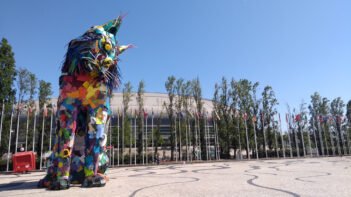
"A commemoration of Vasco da Gama"
Last of all, we travel to the most modern neighbourhood of Lisboa. Welcome inside the neighbourhood of Parque das Nações, the site of the World Expo of 1998. In this year, Portugal commemorated the 500th anniversary of Vasco da Gama's arrival in India in 1498. So, it was a honor that Portugal had the opportunity to organize the world expo in 1998.
"The Oceans, a Heritage for the Future"

The fair's theme was "The Oceans, a Heritage for the Future". This was chosen as a part of the commemoration of the 500th anniversary of the famous Portuguese discoverers who had their influence in changing the world. The mascot of this expo fair was "Gil".
"Still a huge business center"
These days, all the buildings of the expo are still in use. Some of these are the concert arena, shopping center, business buildings, hotels and one of the most impressive sea aquariums in the world: Oceanário.

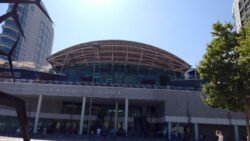


"The longest bridge of Europe"

This event brought a lot of people to Lisboa. A new bridge over the Tagus river was needed. So, the 17km long Vasco da Gama Bridge was built. This still is the longest bridge in Europe.
Digital Travel Guide
All these information bundled together in a digital travel guide. No internet connection needed and have all your inside information in your pocket. Where you are, where you go. Voyageiro.eu delivers a nice PDF to download on your personal device. Ready to travel with passion through Lisbon. The brochure is available in the Etsy shop of Voyageiro.
INSIDE A LOT OF OTHER NEIGHBOURHOODS
"Also a lot to see at the other places"
Near all these neighbourhoods, there are also a lot of others to discover. Let's take a short look inside these neigbourhoods of Lisboa. Because, there also is a lot to see and discover over there.
"Important people in São Vicente"
Behind the São Jorge castle are 2 nice neighbourhoods with must do viewpoints over the city and the river. These are Graça and São Vicente. São Vicente houses the Pantheon and the São Vicente de Fora church and monastry. In these buildings found a lot of famous and important Portuguese people their final resting place. So, you can visit the tombs of Amália Rodrigues, Eusébio and the Royal House of Bragança of Portugal. Also cenotaphs of Vasco da Gama, Luís de Camões, Infante Dom Henrique and some others can you see in the Pantheon.



Graça has nice squares to visit and a lot of viewpoints over the city. Very popular are the Miradouro the Graça and the Miradouro da Senhora do Monte.
"Mouraria as the cradle of the Fado"
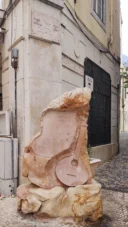
At the other side of the castle and Alfama, you find Mouraria. This is located on the walls of the castle. Welcome in the home of the Fado. Mouraria is the cradle of the Fado. Like in the center of Alfama, overhere you get the real feeling of Lisboa. Follow the Fadista route and let you guide inside the secrets of this neighbourhood.
"The Royal history of Ajuda"

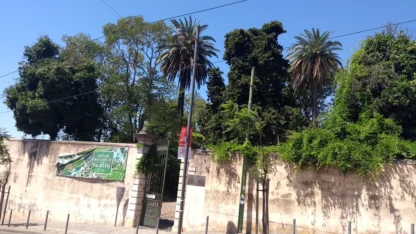
Ajuda is the neighbourhood between Alcântara and Belém. Here you can visit the wonderful Palace of Ajuda. This place holds a lot of Royal history, starting after the earthquake of 1755. A Botanical garden is also available to visit in Ajuda. From there on, it is possible to walk further down to Belém.
"Event hall and shopping centers"


In Parque das Nações, we discovered already the shopping center Vasco da Gama and the Altice Arena. Campo Pequeno also his own event hall and shopping center in one building. In the middle of this building is the Praça dos Touros with below a whole shopping center. But for the most impressive shopping center of Lisboa, you have to go to Benfica, near the Estádio da Luz. Welcome at Colombo. Here you can loose your way. Both of them are a must see in Lisboa. By the way, did you know that you can get very good, healthy and cheap food in a shopping center in Portugal. Try the restaurants over there and decide by yourself.
Read More
"Selected for you"
You want to read more and get noticed about the posts ideal for you. Subscribe to our newsletter. This is the ideal way to stay tuned about all our posts and videos in the spotlight and selected for you.
Also for you
The content of this page is copyright of Lindo Portugal.
© 2023 lindoportugal.eu
With media content of Galeria Sámuel.









